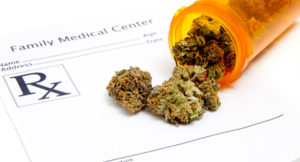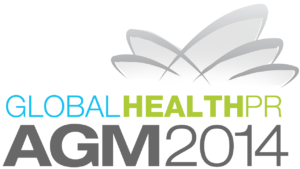As my first week representing VIVA! Communications, Australia as part of the GLOBALHealthPR Professional Exchange Program at Spectrum in Washington D.C. drew to a close, my head was spinning with all of the health PR-related information I’ve recently gleaned.

This week I’ve participated in several interesting brainstorming sessions focusing on campaign concepts and new business development. Observing the communications process involving Spectrum team members across the U.S., from Washington D.C., and New York to Atlanta, and those working from ‘virtual’ offices at home, has proven a truly fascinating exercise.
I was also granted the opportunity to meet with some of the business leads at Spectrum D.C., including Public Affairs lead, Al Jackson, who explained the pivotal role that communication plays in U.S. health and medicines-related politics. Citing several case studies, Al broke this somewhat complex subject matter down with ease, affording me unique insights into the invaluable role that both he, and the Public Affairs division plays at Spectrum, to ensure fairness of communication for U.S. healthcare providers, pharmaceutical companies and patients.
The highlight of my week was obtaining a glimpse into U.S. healthcare policy and public affairs. On Tuesday, I visited Capitol Hill to observe a U.S. Senate hearing into health policy, focusing on the potential ramifications of introducing Food and Drug Administration (FDA) approval for laboratory-developed tests (LDT’s) of a certain type of in-vitro diagnostic. Currently, no such approval is required.
The hearing armed me with fascinating insights into the American approach toward deliberating the role of administration, and government in diagnosing illnesses and delivering precision medicines to the public. Those in favour of FDA regulation (primarily the Democrats) argued LDTs had not been sufficiently validated, and were therefore at risk of inaccuracy, and that patients are not informed that their tests fail to undergo rigorous FDA approval. Those Senators opposed to drug regulation claimed that such approval would slow the process of diagnosing illnesses and introducing life-saving medications to market. Furthermore, those against (mainly the Republicans) stated the labs (including branches of leading care centres and research hospitals) would go bankrupt if they had to pay for such regulation.

Further to this, I was able to meet many members of the Spectrum team, including Kaitlin Bowen, who, like me, is participating in the 2016 GHPR exchange program. This allowed us a great opportunity to chat about the program, and I was able to provide some insight as to what I had uncovered about Spectrum, while allowing Kaitlin to ask questions about VIVA!, and how we work in Australia.
As a former journalist, I also really enjoyed my visit to D.C.’s Newseum, which offered me a great insight into how journalism has been involved in capturing and shaping American history. Each of the exhibits in the Newseum offered fascinating insight into the history of US news reporting, and allowed me an idea of some of the most iconic news stories ever published in the US.
For me, it was amazing to learn about the role that the first amendment has played in the history of news reporting in the USA, while also being allowed to recognise the sacrifice made by many journalists in telling the story, with a wall of remembrance to those who had lost their lives in the service of news reporting.
On Thursday, I was given the opportunity to present about my work, and the way we work at VIVA! Communications in Australia to a “full house” at the D.C. office brunch and learn.
The response from the team who tuned in, and listed to me talk was really great. It was really humbling to listen as the team responded to the presentation, with lots of questions being asked, and great feedback from everyone.

And, on Friday, my final day in Washington D.C., I was granted a fantastic opportunity to visit the advocacy office of the American Cancer Society (ACS), and to spend some time with Bob Chapman, Managing Director of Global Relay for Life, who provided me with some phenomenal insight around the history and aims of ACS and how it works to achieve its goals, both in the U.S. and globally.
After meeting with Bob, he invited me along to listen to a talk being given by Uruguayan cardiologist, and one of the survivors of the 1972 plane crash in the Andes mountains, dubbed the “Miracle of the Andes”, Dr Roberto Canessa.
Listening to Dr Canessa talk was captivating, as he shared the story of his survival, and the impact it had on his life moving forward. It was definitely a highlight of my time in D.C.
Every day I gleaned new and invaluable insights into the U.S. health communication marketplace. I can’t wait to see what unfolds this week in New York City.
To Jonathan, Andrew and all of the team in D.C. I want to extend my wholehearted thanks. You were wonderful hosts, and provided me an opportunity, friendships and an experience I will remember for the rest of my life. Thank you all for that.
Be sure to follow my exchange with GLOBALHealthPR at #GHPRConnects.

 changes to medicinal marijuana laws and regulations globally have expanded opportunities for medical research and patient care.
changes to medicinal marijuana laws and regulations globally have expanded opportunities for medical research and patient care.


